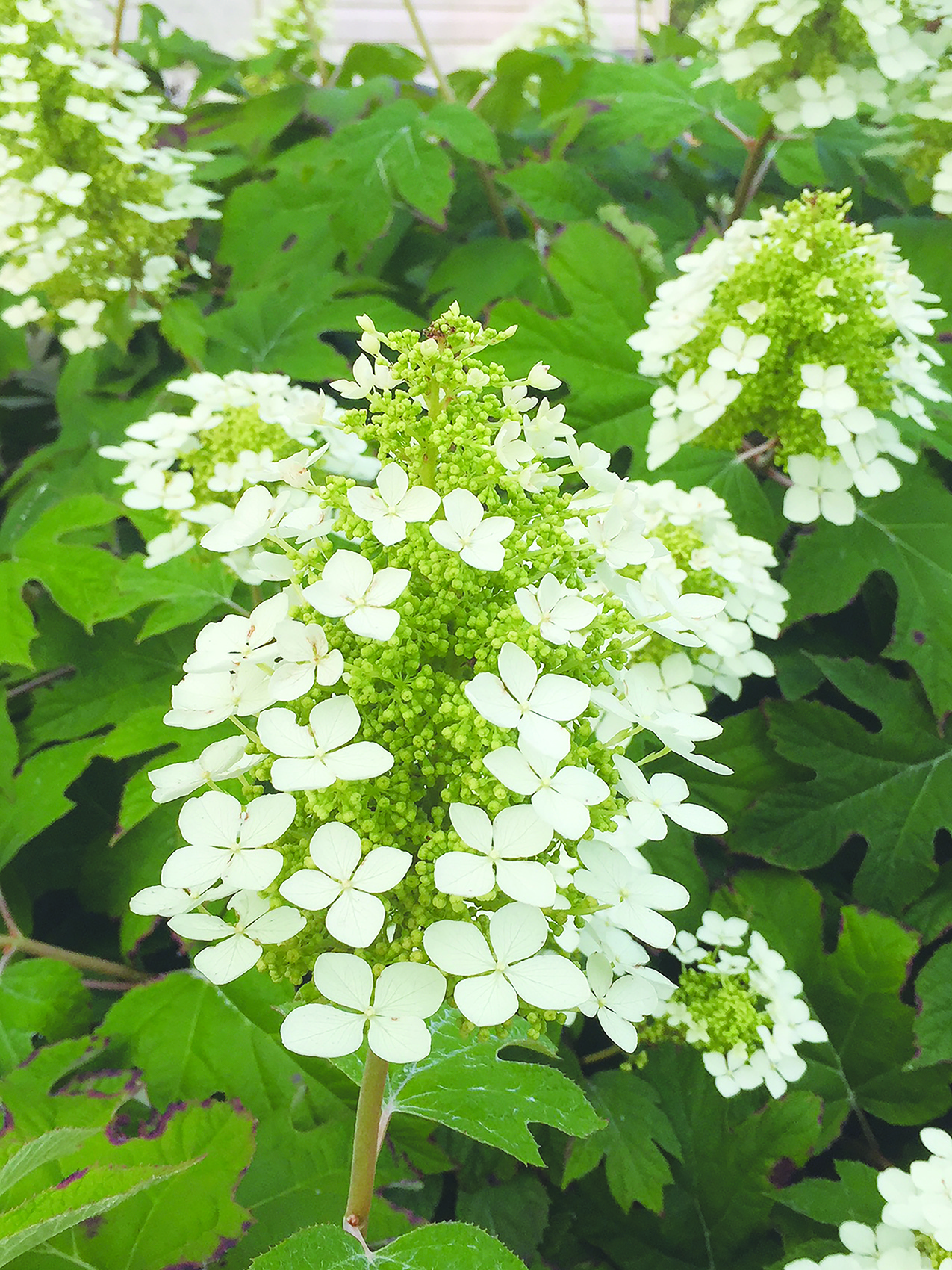
Oakleaf Hydrangeas are beautiful native shrubs that thrive in full sun to part shade and rich, slightly acidic, moist but well drained soils found in many of Mid-Shore gardens. (Photo by Virginia Rozenkranz)
Oakleaf Hydrangeas are beautiful native shrubs that thrive in full sun to part shade and rich, slightly acidic, moist but well drained soils found in many Mid-Shore gardens.
There are some varieties that can grow up to 10-12 feet tall to form wonderful summer privacy screens like “Alice,” “Alison’ and “Harmony.”
There are also smaller ones that only grow 6-8 feet tall like “Amethyst,” “Gatsby’s Gal,” “Queen of Hearts, and “Snowflake.”
And for smaller gardens there are a few compact, even smaller Oakleaf hydrangeas that grow 2-5 feet tall like “Little Honey,” “Ruby Slippers” and “Sikes Dwarf,” which is so small it can thrive in a container.
In spring the large, medium or small leaves emerge with deep lobes that can resemble an oak leaf.
Bright green in early spring and into summer and a bold burgundy red in the cool temperatures in fall.
The bouquets of flowers bloom on old wood, so pruning should be done after the flowers are finished.
As beautiful as the leaves are, many gardeners purchase the plants because of the beautiful flowers that are held on the plant like candles in a candlestick holder.
Many of the varieties’ flowers bloom pure white and quickly or slowly turn pink or rose while others go from pure white to green as it matures.
The flower bouquets that bloom in June look a bit like an ice cream cone, with large white flowers mixed in with smaller but fertile flowers.
The colors can last for weeks before they fade to a soft tan.
Depending on the variety the flower bouquet can be as short as 4 inches tall or as tall as 9 inches tall!
If left on the shrub, the flowers will air dry and add texture to the garden all through the winter.
The Oakleaf Hydrangea, like a number of native shrubs, is a multi-stemmed plant that can sometimes become a thicket from the suckers that grow from the roots.
The bark of the Oakleaf peels off or exfoliates in strips leaving a beautiful dark brown bark under the tan bark, adding color even in the cold of winter.
(Editor’s Note: Ginny Rosenkranz is a commercial horticulture specialist with the University of Maryland Extension.)



